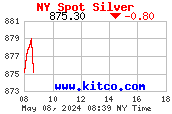Currency Correlations
Each cell in the following tables contains the correlation coefficient for
two currency pairs (currency correlations) which are named in
the corresponding fields of the upper and left-hand panel.
Correlation coefficient measures how closely two currency pairs move
together. If both pairs move up and down in perfect unison then
their correlation coefficient is +1. If the movement of one
pair doesn't tell anything about the movement of the other pair
then there is a zero correlation between these pairs. If two
pairs move in exactly opposite directions then their
correlation coefficient is -1. Correlations are also divided
into four groups in accordance with their strength. For easy viewing all
correlations in the following table are coloured to show their strength, as is
noted below:
- Weak (Green): the absolute value of the correlation
coefficient doesn't exceed 0,3 (i.e. it can be anything from -0,3 to +0,3). - Medium (Yellow): the absolute value of the coefficient is
greater than 0,3 but less than 0,5. - Strong (Orange): the absolute value of the coefficient is
bigger than 0,5 but smaller than 0,8. - High (Red): the absolute value of the correlation
coefficient is equal to or greater than 0,8.
The correlation coefficients are calculated using the daily closing prices
seen over the last 40 trading days (shorter-term) and the last 120 trading days
(longer term). These two periods
have
been chosen from among two hundred possible correlation periods
based on how well their correlation coefficients correspond with the daily price
fluctuations. As you can see from
correlation simulator (Please note: This calculator requires that you have
Flash installed and Javascript enabled in your browser) the actual correlation
will usually diverge stronger from the target value when it is calculated for
shorter time periods. This makes it important to check the short-term
correlations against the longer-term correlations, which is done in the REL
table below. The REL (from "reliability") table compares the short-term and the
long-term correlations and shows the average of both coefficients when they stay
close for both time periods. It is believed that if the short-term and the
long-term correlation coefficients agree, the correlation is more reliable -
more likely to persist in the near future. You can check how
the short-term and the long-term daily correlations change over time for the
most commonly traded currency pairs at the
trailing correlation page (Please note: The size of this page is 1,3 Mbs and
it requires that you have Flash installed and Javascript enabled in your
browser).
Correlation can also be defined as the degree of similarity
(direct similarity when correlation is positive/inverse similarity when
correlation is negative) that you can expect to exist between technical
chart patterns (e.g.
trendlines,
price
patterns,
candlesticks and
Elliott waves) visible on any two currency pairs' charts. For example, you
can expect to see almost exact mirror image of the trendline
appearing on the daily EUR/USD chart when you look at the same time-scale chart
of USD/CHF (because the negative correlation of these pairs is so high). Daily
correlation coefficients shown here, therefore, measure the correspondence
between intermediate (last 120 days) and the minor (last 40 days) chart patterns
visible on the daily charts of the currency pairs for which
they are calculated. This information will be most useful for position traders
(keeping the positions open from one day to a few days) who rely primarily on
the daily chart studies. If you wish to calculate correlations for other time
periods you can do so in Excel, as is described at the bottom of this page.
Currency Correlations Table


